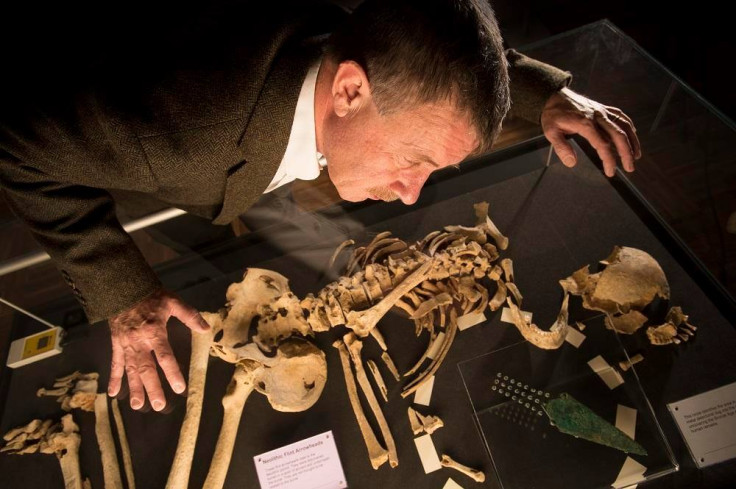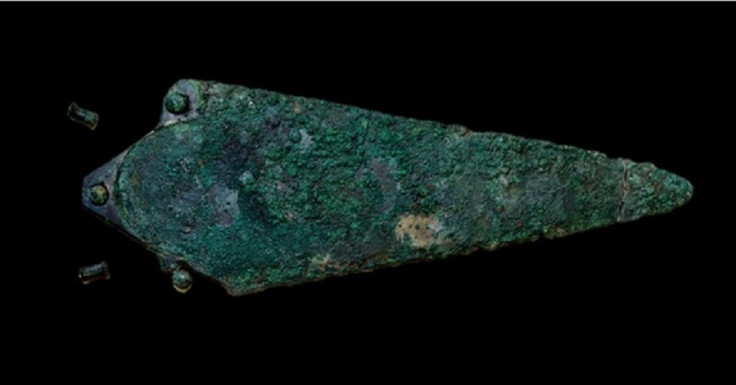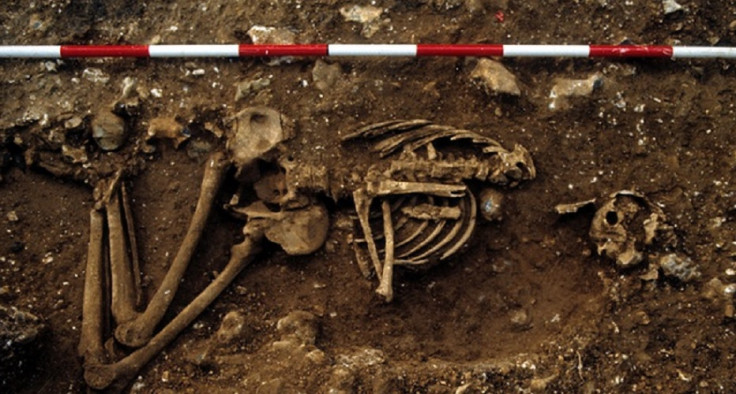Racton Man: Giant Bronze Age warrior chief 'was killed in combat with one-two blow'

A Bronze Age giant believed to have been a warrior chief was killed in battle about 4,000 years ago, scientists have said.
The skeleton of the Racton Man – as he is now known – was first unearthed in Chichester in 1989. The find was of particular significance because he was found with one of the first bronze daggers in the UK.
Researchers from across the country have now analysed the skeleton, providing an insight into his life and how he died.
It is thought the Racton Man was a tribal leader from the start of the Bronze Age – he was buried over 4,000 years ago and was over the age of 45 at the time of his death, far older than the average person from the time. Racton Man was also much taller than his peers, standing at 6ft tall.
Myles Cullen, cabinet member for commercial services at Chichester Council, said: "The results are truly fascinating. To think that we can discover such detail about a man who died more than 4,000 years ago, while learning more about the country's history, is just incredible."

Isotope analysis of the skeleton's teeth showed he was likely brought up in the south of Britain, possible somewhere west of Sussex. He died sometime between 2300BC and 2150BC.
His bones showed signs of spinal degeneration, believed to be related to his age. He also suffered from chronic sinus infection and tooth decay.
When he died, he was struck to the right upper arm bone, close to the elbow. There is no sign this wound healed and the blow is consistent with the arm being raised to protect his head.
There is also evidence to suggest he was struck in the lower part of the right shoulder, under the armpit: "A sharp force blow to this area of the body would have been consistent with a double strike - one to the head, blocked by the raised right arm, and a second deep into the armpit, presumably to sever the major blood vessels in this area," a statement said.
Experts say the dagger he was buried with indicates he was probably an early leader killed in battle: "This dagger is bronze and so this item would have been incredibly rare at the time; its colour and keen hard edge would have distinguished it from the more common copper objects in use," said Stuart Needham, the Bronze Age specialist who collected all of the research.

"We don't understand the social structure of this time, but he would have been a very prominent member of society, someone of great seniority."
He added that the dagger was made in the period of transition between copper and bronze, with Racton Man "right at the cutting edge of this technological advance".
James Kenny, the archaeologist at Chichester District Council who originally discovered the skeleton, said: "This is very rare for burials around this period. To start with, the fact that this man had a bronze dagger would have been phenomenally rare then - let alone now. This would have been right at the start of the introduction of this type of technology and would have been one of the first bronze daggers in existence in this country.
"There are so few burials dating back to the early Bronze Age - especially in the Chichester region. It's also rare to find such a distinctive burial that has been archaeologically excavated in recent times. For me, this is really special because I've been able to see this through from the original discovery to final analysis."
© Copyright IBTimes 2025. All rights reserved.






















